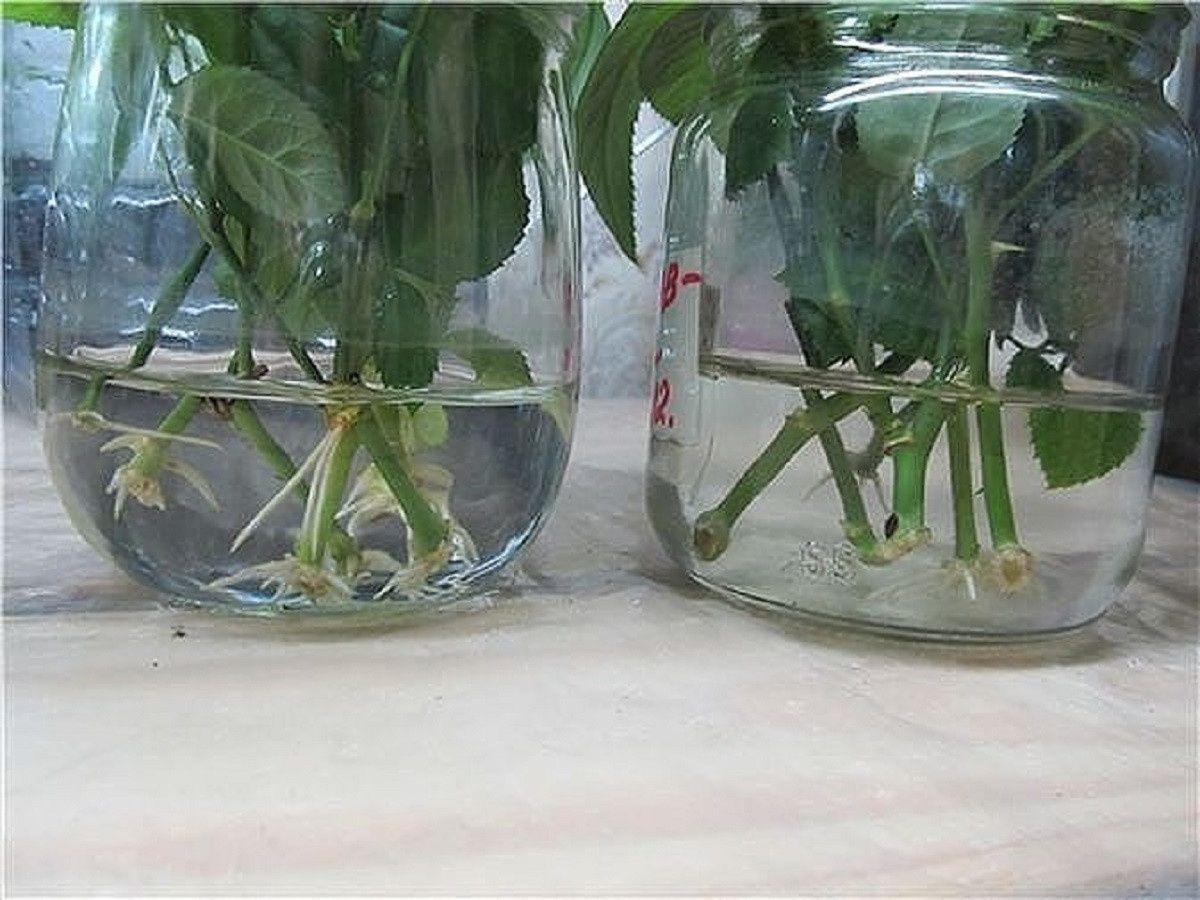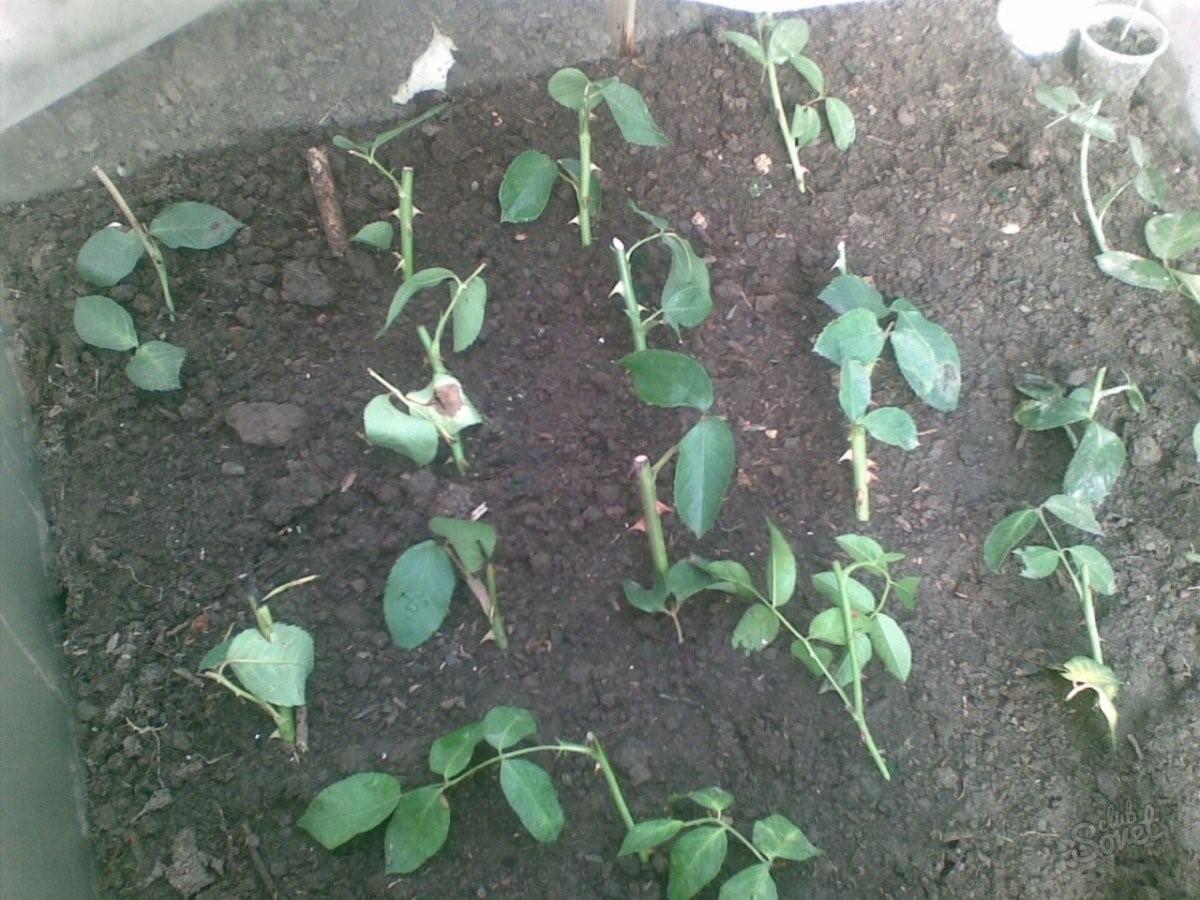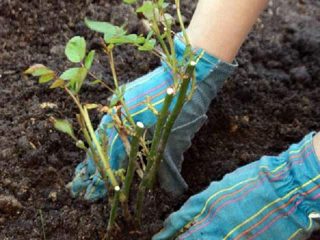Content
- 1 Is it possible to cut roses at home in the fall?
- 2 Advantages of autumn cuttings of roses
- 3 Which rose to choose for cuttings
- 4 When to take cuttings of roses for propagation in the fall
- 5 Preparation of cuttings
- 6 Planting rose cuttings in autumn in open ground
- 7 How to root rose cuttings in the fall at home
- 8 Planting rooted rose cuttings in the ground in autumn
- 9 Conclusion
Roses are usually propagated by cuttings, as this is the simplest and most effective method. It is suitable for most plants, in addition, the gardener can preserve the maternal qualities of the variety he likes. To root a rose cutting in the fall, you need to know some nuances. It’s worth talking about them in more detail.
Is it possible to cut roses at home in the fall?
Beginners are accustomed to rooting plants in the spring, when the flora is in full swing. But what about the propagation of roses in the fall - is such a procedure possible? Of course it is permissible. Many gardeners do this.
Advantages of autumn cuttings of roses
Planting material has excellent viability and inherits parental characteristics. In autumn, roses are taken from cuttings for the following reasons:
- low demands on raw materials;
- roses quickly adapt to cold weather and renew shoots even when the roots are frozen;
- the material is more than available.

In addition, the plant does not form root shoots, simplifying the gardener’s task
Compared to grafting, growing roses from cuttings in the fall is much easier - seedlings have better immunity, can withstand sudden temperature changes more easily and do not require close supervision.
Which rose to choose for cuttings
Not all roses prefer propagation by cuttings. You can dilute the culture by taking it from a bouquet, asking neighbors or friends. But you need to take into account that some species simply do not form roots when cuttings.
The following varieties are suitable for such breeding:
- park;
- polyanthaceae;
- dwarf;
- large-flowered;
- floribunda;
- hybrid tea;
- ground cover;
- climbing
When to take cuttings of roses for propagation in the fall
In the fall, it is important not to miss the deadlines when you can cut the cuttings for planting. The material is harvested with the arrival of night cold, when the thermometer scale drops below 0. However, the daytime temperature must remain positive - this should be remembered.
In the Moscow region, for example, they begin harvesting cuttings in mid-autumn. Gardeners have the whole of October to collect raw materials. The same applies to the Volga region, Leningrad and other cities with a similar climate. The timing is completely different in the Siberian and Ural regions, where cold weather sets in faster. In this case, the cuttings need to be cut earlier - by the end of September.
Planting rose cuttings correctly at the very beginning of autumn is what many gardeners do. Frost is still a long way off, and roses have time to adapt.
Preparation of cuttings
As in the spring, the cuttings need to be inspected in the fall. Ripe shoots about 5 mm thick are suitable for cutting. The degree of ripening is determined using the spines: if they fall off with gentle pressure, the material is ready for planting.

Each cutting should have three buds
The stem is cut to a length of 18 to 24 cm - you can choose the middle option.
Since the material is the same, it is very important to stick it in with the correct end. To do this, an oblique incision is made in the lower part and it is stuck into it. From the nearest bud to the cut, a distance of 2 cm is removed.
In autumn, the rose cutting should be cut with a sharp tool, the blade of which has been previously moistened with a disinfectant. You cannot use scissors, as the tissue on the stem may remain torn. Such roses have less chance of survival.
To quickly root roses from autumn cuttings, remove the lower leaves and leave 3-4 at the top. If the gardener plans to plant not in the fall, but in the spring, the foliage can be removed completely - it is not needed.
When the cuttings are cut, they should be treated with disinfectant and growth-stimulating solutions. Experts recommend dipping the ends of the material in liquid wax and then rinsing with cold water.
Planting rose cuttings in autumn in open ground
You don’t need to know much to plant cuttings. The main thing here is to choose the right place for roses and understand the basic rules of agricultural technology.
Selecting a location
When choosing a place on the site, take into account the varietal characteristics of the rose. It is easier for some crops to live in the open sun, for others in partial shade, and for others under the canopy of trees.
As for the soil, 30 days before planting it should be dug up and mixed with river sand, peat, compost or other organic matter.
The ground must allow air and water to pass through. This can be found out by conducting an experiment: pour one bucket of water onto the selected area and see how long it takes for the liquid to seep through. If the water goes away quickly, the soil is good, but if the owner watches the puddle for a long time, it is better to choose another place.
Landing rules
Rooting roses from cuttings in the fall is the best propagation method for most species. The plant is planted immediately in a permanent area so as not to expose it to stress again.

If replanting is still necessary, it is planned for next year, when the root system has grown sufficiently
Dig a hole 35 cm deep, put pebbles and river sand (drainage) on the bottom, and then fill it with freshly cut grass and compost. Rose cuttings are not inserted at a right angle, like other plants, but at 45 degrees.
Wintering
If you plant rose cuttings in late autumn (November), you need to take care of shelter for the winter. Even the most winter-hardy variety in the early stages is not able to withstand Russian frosts. Fortunately, preparing a shelter is very simple - you just need to cut a plastic bottle and cover the plantings with it.
In autumn there is a lot of fallen leaves, which can also be used for protection. Straw and sawdust are also great. If a season with little snow is expected, the shelter is additionally covered with soil and covered with film.
You can tell that rose cuttings have safely survived the winter by the presence of leaves and the green color of the shoot. Soon they will begin to grow and form new buds.
How to root rose cuttings in the fall at home
Propagating roses in open ground can be problematic, especially in the fall, when night frosts arrive. This is where homemade containers come to the rescue, in which the cuttings are stored until next spring.
In water
It is important to keep the material clean - use drinking water for cuttings and change it regularly. The cuttings are soaked in liquid to 1/2 of their height. The jar is placed in a lighted place where direct rays do not reach.

Roots will appear in the fall - the grower will be able to observe this process with his own eyes.
To make rooting more effective, cover the container with polyethylene, not forgetting to make ventilation holes in the bag. When the roots appear, the rose is transplanted into a pot or into the garden (additionally covered).
In the ground
Roses can be propagated directly in a pot. To do this, you will need a spacious container and store-bought substrate. In autumn, cuttings are planted at a distance of 20 cm from each other. They are covered with film or a bottle and cared for until spring or next autumn.
After 40 days of cultivation, the container is placed in a cellar or basement. If necessary, seedlings can be planted. Young roses must be inspected during storage. Periodically water the soil with water. To do this, use liquid at room temperature.

If planting is planned for spring, it is best to do it in mid-May, when the earth has had time to warm up.
The potting soil must be nutritious and disinfected. You can buy it in the store or prepare it yourself. Professionals purchase ready-made substrates because they are processed.
Planting rooted rose cuttings in the ground in autumn
Roses are planted either towards the end of spring or with the arrival of summer. Some, fearing for the health of the roots, plant in the fall.
Whatever season the gardener chooses, it is necessary to dig a hole 30 cm deep and pour coarse sand and brick fragments into it. If the soil is not fertilized, rotted manure is placed on top (fresh manure is not used).
To transplant a rose in the fall, the rooted cuttings are placed in a hole at an oblique angle, as described above. Most of the plant is buried in drops, and only a fragment with buds is left at the top. In the fall, the material needs to be covered - film or a bottle without a neck is perfect.
The roses are watered daily for three weeks. By the next month, watering is halved. There should be no excess moisture under the shelter - this can lead to rotting. Therefore, in the fall, plantings need to be ventilated.
After another month, the cuttings begin to be hardened, that is, left in the open air for a longer period of time.

After two weeks, the shelter is removed, but roses must be protected for the winter.
Conclusion
Both a professional and a beginner can root a rose cutting in the fall. The process is easy and even easier if you follow the instructions. It is important to remember that not all varieties are suitable for cuttings. The owner needs to check this information on the Internet, indicating the name of his variety.









Which side of the world should the tilt be on when landing?